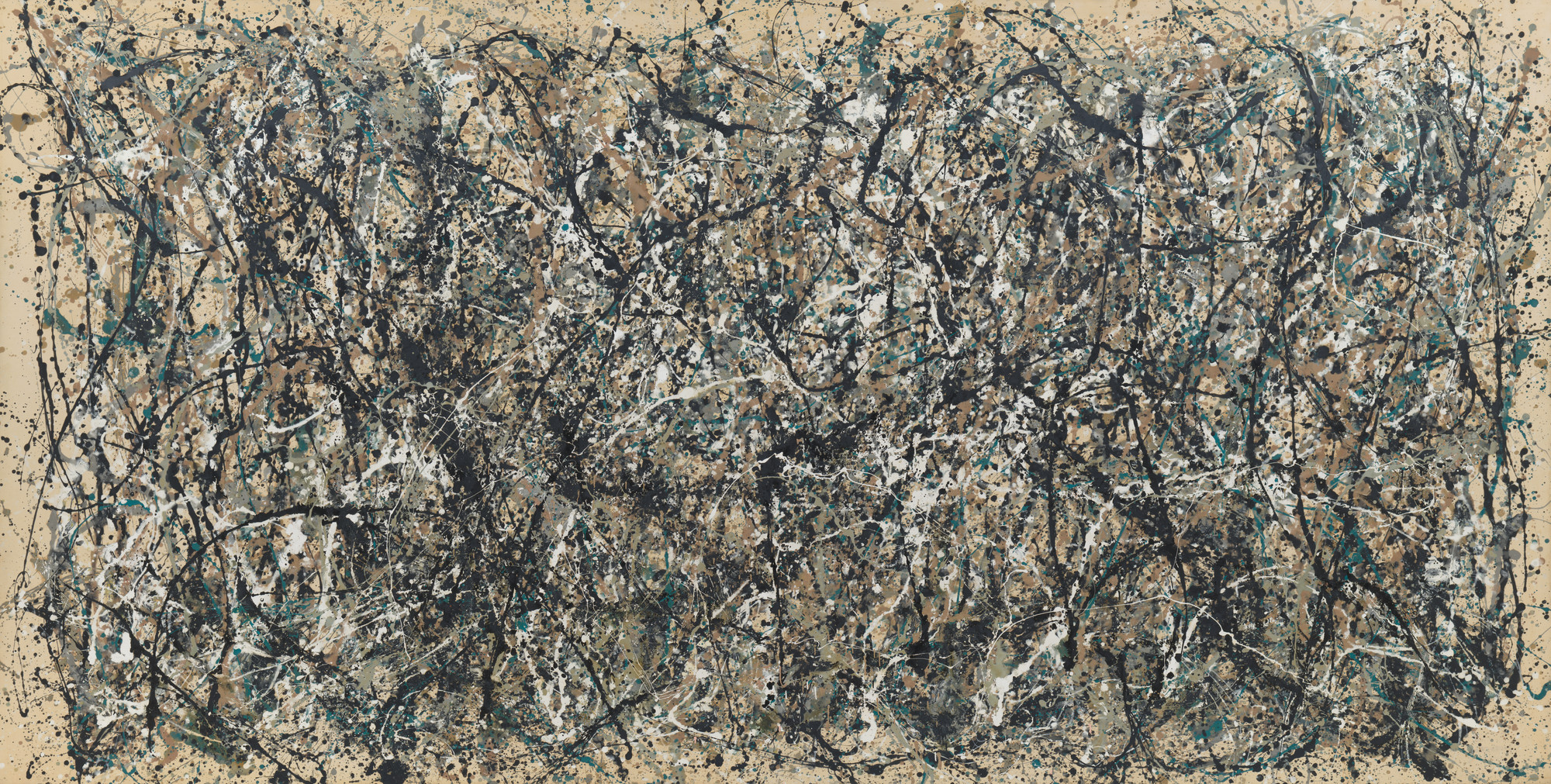Curator, Ann Temkin: Jackson Pollock is best known for what we have come to call his drip paintings. And drip is probably not so fair a name for them because a lot more is going on here than simply holding a can of paint and dripping it down on to a canvas.
He had made, for many years, paintings on easels in a kind of conventional way with brushes and oil paints. And then, around the year 1947, he decided that he was going to approach his work in an entirely new way. And decided that he would paint with canvases unstretched, laid out on the floor. He would actually move his body around, above them, over them, working with paint that was in cans. And with sticks or with stiffened paint brushes, he would less drip than probably fling the paint from the cans onto the canvas with what is actually, we now recognize, an enormous amount of control. Because if you look at the way these various lines of paint skate all over the canvas, you realize the degree to which there is some kind of incredible calculation of when the paint gets thinner and thicker and lighter and heavier and faster and slower.
This was a very physical kind of painting. It wasn't a painting that one could do sitting down, or that one did without a tremendous expenditure of energy. And that energy actually is transferred on to the canvas in a way that's very direct and immediate.
